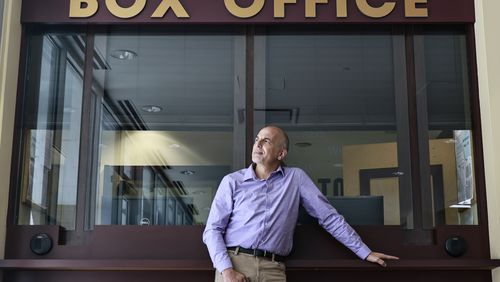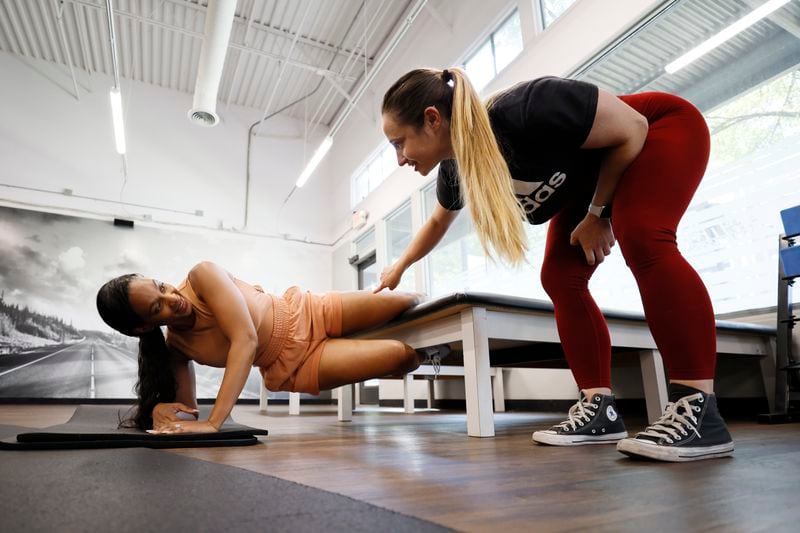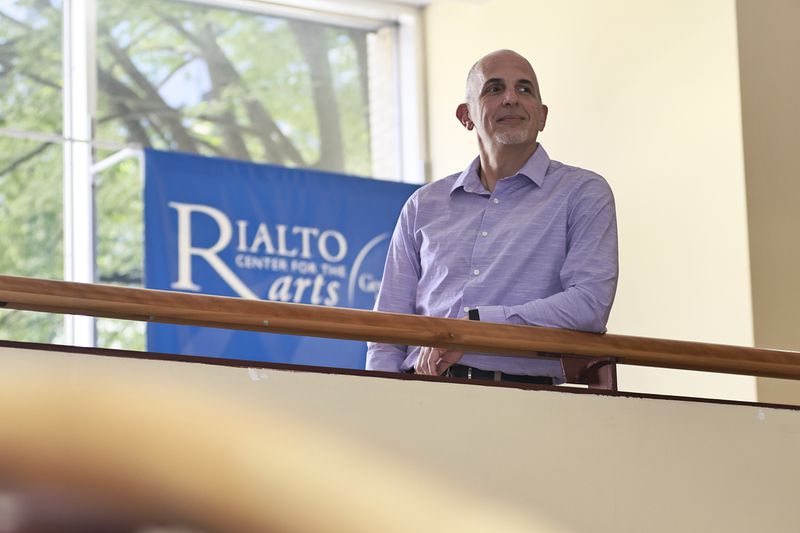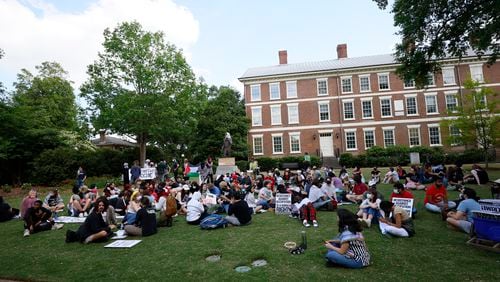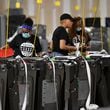Ann DeGuire got what she wanted.
She was hired by Southern Turf Company to do a job she liked, working the hours she needed, for the salary she was looking for, though she had no experience selling artificial grass.
But there was one sticking point. DeGuire told her boss she was nervous about COVID-19 and sharing space.
”I took her to the hallway and said, ‘I am just not comfortable with this,’” DeGuire said.
No problem, her boss said. So DeGuire works from home, coming in only for meetings.
The company’s compliance is emblematic of a labor market that has, for months, been tilted in favor of workers. Since the economy started rebounding from pandemic-triggered shutdowns, many employers have struggled to fill job openings and, as a result, are sweetening paychecks, boosting benefits and granting requests for flexibility.
The employment market in Georgia is arguably as strong as it’s ever been. According to the state Department of Labor, there were 285,000 open jobs last month and just 150,000 people actively searching for work.
Nationally, the ratio was even steeper, about two openings for every unemployed worker, according to the government’s Job Openings and Labor Turnover Survey released Tuesday.
Workers have a lot of choice — and the confidence that comes with it. More workers are asserting themselves, and efforts to organize are on the upswing. Filings by workers seeking to vote on unionizing have increased 56% in the past three quarters, according to the National Labor Relations Board.
But Labor Day 2022 also finds the country in the midst of an inflation-fighting campaign that seems likely to rewrite that equation, to shift the advantage away from workers. The Federal Reserve has been hiking short-term interest rates with the goal of taming inflation by slowing the economy.
Credit: Miguel Martinez
Credit: Miguel Martinez
In the labor market, there are whiffs of change. The number of listings on the state’s jobs site has dropped 15% since January, according to the state labor department. If the Fed’s campaign gets traction, the state will see more layoffs, less hiring and less leverage for workers.
It just hasn’t happened — yet.
James Taylor, Atlanta-based senior regional director for staffing company Robert Half, said he had a recent client who was disgruntled and ready to jump from a $60,000-a-year job. The man found himself peppered with offers of up to $10,000 more. Then, at the end of the day, his own employer counter-offered with about $85,000, and so the employee stayed.
The punchline? The extra money didn’t make him happy, so he ended up leaving anyway.
The number of people quitting is still near historic highs, a sign of workers’ confidence that they can leave a job and land well, said senior economist AnnElizabeth Konkel of the Indeed Hiring Lab.
“This increase underscores that some employers will continue to face hiring challenges,” she said. “While there are some signs of cooling, all in all, the labor market is still hot.”
It is, in many ways, the inverse of a dozen years ago when a surplus of jobseekers gave employers the upper hand. Now, workers are frequently getting what they want in pay, benefits and other arrangements. On average, workers last month were making 6.7% more than they were a year ago. But among those who were switching jobs, the average was 8.5%.
Earlier in the pandemic, the floor on many wages — especially at big companies like Target and Amazon — moved up to $15 an hour. Expectations have continued to shift upward. Last week, Atlanta-based Gray Television, which owns assets across the country, said it will lift its minimum wage to $18 per hour, giving raises to roughly 2,000 employees.
More people now are doing online searches seeking jobs that pay at least $20-an-hour rather than those paying $15 an hour, according to Konkel at Indeed.
But worker desires aren’t just about pay.
Pre-pandemic, about 5% of work was being done at home, but that has soared to about 30%, according to WFH Research, a team of economists that has been studying work arrangements. Most professionals want to work remotely and 32% want a mix of in-office and at-home work, according to a survey by FlexJobs, a database of work opportunities.
Tramaine Ray had no interest in a hybrid arrangement.
Her temporary job came to an end in the spring. After looking around for several weeks, she saw a job posting for an executive recruiting coordinator at a large Atlanta health care organization. She’s been doing the job since June. She likes it. She’s good at it. The pay is right and the benefits are good.
She’s pretty happy with things. And she considers herself a great fit.
“Everything they wanted in the job was something I had done in previous jobs,” Ray said. “And I decided I wanted remote work because I need the flexibility.”
Oh, and she lives in Memphis.
Credit: cut
Credit: cut
With job growth outpacing available workers, companies shrug off issues that might have once hindered job candidates, said Victoria Myers, head of regional talent acquisition at Amdocs, which has 480 employees and 89 contractors in metro Atlanta doing work for telecommunications companies.
“We see people who have been out of work, maybe even for 15 years, but they’re ready to return,” she said. “As a company, we are not going to mind that gap in your resume.”
Unemployment had been falling for a decade after the deep recession of 2007-09. Then came the pandemic, which at least temporarily cut tens of millions of jobs. Even though the economy rebounded, some workers stayed on the sideline, either sick, caring for children and elderly, or sometimes retiring early.
Gradually, many are coming back to work, said Jill Eubank, senior vice president at staffing company Randstad. “Applications for jobs are up. Some people have unretired. People are reentering the workforce.”
Credit: cus
Credit: cus
The reentry has not matched the pace of need.
The share of working-age Georgians in jobs has been climbing since 2020, but the workforce had nearly 150,000 more in 2016.
The shrinkage has not been just pandemic-driven.
Credit: Natrice Miller / Natrice.Miller@ajc.com
Credit: Natrice Miller / Natrice.Miller@ajc.com
Huge numbers of boomers are aging into retirement. Fewer than 1 in 4 people age 65 and older are working, according to the Bureau of Labor Statistics. And, in Georgia, people 65 and older went from 10.7% of the population a decade ago to 14.7% last year — nearly 1.6 million people.
While Georgia’s unemployment rate last month fell to a historically low 2.8%, the Fed has signaled a determination to throw out the anchor and slow the economy.
Still the environment remains a good one for making changes.
Christopher Duenow had been a volleyball coach for 20 years when he lost his position as assistant at Georgia State University. He had studied the arts in college, then taught band for about a decade. He decided he wanted to return to the performing arts.
Many theaters had job openings, and he applied to a number of them, including the Rialto Center for the Arts, run by Georgia State. “In a different hiring culture, with me not having specific experience, I would have just ended up in the stack,” he said. “But I got the chance to help them see how my skills translated.”
He was hired.
“I have been able to live the things I wanted to, and not everybody gets to do that,” Duenow said. “I couldn’t be more blessed.”
Pace of annual wage growth
July 2022: 6.7%
July 2021: 3.7%
July 2020: 3.9%
July 2019: 3.9%
July 2018: 3.3%
Wage growth by category, July 2022
Overall: 6.7%
Job switcher: 8.5%
Men: 7.1%
Women: 6.4%
Hourly worker: 7.1%
With college degree: 5.8%
Georgia population, age 65 and older
2016: 14.50%
2021: 15.56%
Georgia, share of working-age population
2010: 60.6%
2021: 59.2%
Georgia unemployed, unemployment rate
Jan.: 168,339 (3.2%)
Feb.: 166,214 (3.2%)
March: 165,064 (3.1%)
April: 160,871 (3.1%)
May: 157,516 (3.0%)
June: 154,905 (2.9%)
July: 150,191 (2.8%)
Sources: Bureau of Labor Statistics, Federal Reserve Bank of Atlanta, Georgia Department of Labor, USA Facts
Credit: Miguel Martinez
Credit: Miguel Martinez
__________________________________
About the Author
